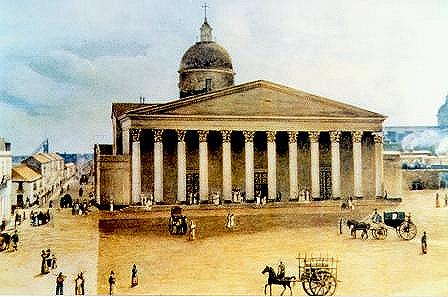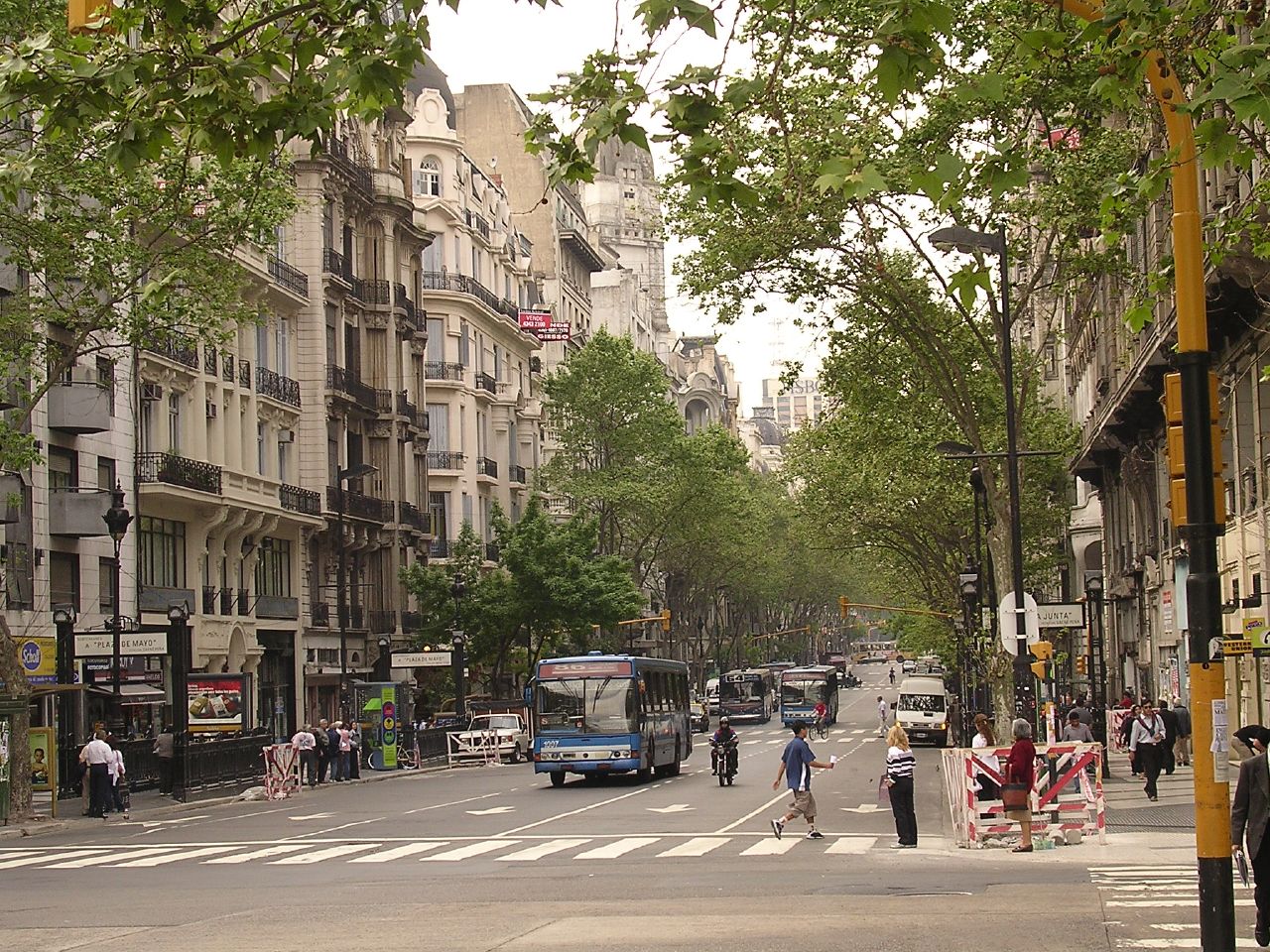|
Catedral (Buenos Aires Metro)
Catedral is a terminal station of the Line D of the Buenos Aires Underground. From here, passengers may transfer to the Perú station on Line A and the Bolívar station on Line E. Overview It is located at the intersection of Roque Sáenz Peña Avenue and Florida Street, which gave the original name of the station. Its current name comes from the Buenos Aires Metropolitan Cathedral, located in the vicinity of the station. This station had the name ''Florida'', as recorded on maps of the network of 1955. The station was inaugurated on 3 June 1937 as part of the inaugural section of Line D, between Catedral and Tribunales. In 1997 it was declared a national historic monument. (Spanish) Retrieved 8 November 2010 The station was used as a set in the 1996 Argentine science fiction film [...More Info...] [...Related Items...] OR: [Wikipedia] [Google] [Baidu] |
Side Platforms
A side platform (also known as a marginal platform or a single-face platform) is a platform positioned to the side of one or more railway tracks or guideways at a railway station, tram stop, or transitway. A station having dual side platforms, one for each direction of travel, is the basic design used for double-track railway lines (as opposed to, for instance, the island platform where a single platform lies between the tracks). Side platforms may result in a wider overall footprint for the station compared with an island platform where a single width of platform can be shared by riders using either track. In some stations, the two side platforms are connected by a footbridge running above and over the tracks. While a pair of side platforms is often provided on a dual-track line, a single side platform is usually sufficient for a single-track line. Layout Where the station is close to a level crossing (grade crossing) the platforms may either be on the same side of the cross ... [...More Info...] [...Related Items...] OR: [Wikipedia] [Google] [Baidu] |
Buenos Aires Metropolitan Cathedral
The Buenos Aires Metropolitan Cathedral ( es, Catedral Metropolitana de Buenos Aires) is the main Catholic church in Buenos Aires, Argentina. It is located in the city center, overlooking Plaza de Mayo, on the corner of San Martín and Rivadavia streets, in the San Nicolás neighbourhood. It is the mother church of the Archdiocese of Buenos Aires and the primatial church of Argentina. The Cathedral of Buenos Aires was rebuilt several times since its humble origins in the 16th century. The present building is a mix of architectural styles, with an 18th-century nave and dome and a severe, 19th-century Neoclassical façade without towers. The interior keeps precious 18th-century statues and altarpieces, as well as abundant Neo-Renaissance and Neo-Baroque decoration. History and architecture Origins During the definitive foundation of Buenos Aires by Juan de Garay in 1580, part of a block facing the main square was reserved for the major church of the town. This is still the lo ... [...More Info...] [...Related Items...] OR: [Wikipedia] [Google] [Baidu] |
Railway Stations Opened In 1937
Rail transport (also known as train transport) is a means of transport that transfers passengers and goods on wheeled vehicles running on rails, which are incorporated in tracks. In contrast to road transport, where the vehicles run on a prepared flat surface, rail vehicles (rolling stock) are directionally guided by the tracks on which they run. Tracks usually consist of steel rails, installed on sleepers (ties) set in ballast, on which the rolling stock, usually fitted with metal wheels, moves. Other variations are also possible, such as "slab track", in which the rails are fastened to a concrete foundation resting on a prepared subsurface. Rolling stock in a rail transport system generally encounters lower frictional resistance than rubber-tyred road vehicles, so passenger and freight cars (carriages and wagons) can be coupled into longer trains. The operation is carried out by a railway company, providing transport between train stations or freight customer faciliti ... [...More Info...] [...Related Items...] OR: [Wikipedia] [Google] [Baidu] |
Avenida De Mayo
May Avenue ( es, Avenida de Mayo) is an avenue in Buenos Aires, capital of Argentina. It connects the Plaza de Mayo with Congressional Plaza, and extends in a west–east direction before merging into Rivadavia Avenue. History and overview Built on an initiative by Mayor Torcuato de Alvear, work began in 1885 and was completed in 1894. The avenue is often compared with ''La Gran Vía'' in Madrid, although the Spanish avenue was built later (1910). It is also compared to those in Paris or Barcelona due to its sophisticated buildings of art nouveau, neoclassic and eclectic styles. The avenue was named in honor of the May Revolution of 1810 (the event that led to Argentine Independence). The site of the assembly that touched off the revolution (the Buenos Aires Cabildo) was partially demolished in 1888 to make way for the avenue's entry into Plaza de Mayo. The avenue's layout, built through existing urban blocks instead of via the widening of a parallel street, was designed by ... [...More Info...] [...Related Items...] OR: [Wikipedia] [Google] [Baidu] |
Buenos Aires Cabildo
The Cabildo of Buenos Aires ( es, Cabildo de Buenos Aires) is the public building in Buenos Aires that was used as seat of the town council during the colonial era and the government house of the Viceroyalty of the Río de la Plata. Today the building is used as a museum. History Mayor Manuel de Frías proposed the building of the cabildo in what is now the Plaza de Mayo on March 3, 1608, since the government of the city lacked such a building. Its construction financed with taxes from the port of Buenos Aires, the building was finished in 1610 but was soon found to be too small and had to be expanded. In 1682, due to lack of maintenance, the building was almost in ruins, and the construction was planned of a new cabildo that was two stories high and 11 arches wide. Construction of the new building did not start until 23 July 1725, was suspended in 1728, and restarted in 1731. Soon construction was, however, again suspended due to lack of funds. The tower of the new cabildo ... [...More Info...] [...Related Items...] OR: [Wikipedia] [Google] [Baidu] |
Plaza De Mayo
The Plaza de Mayo (; en, May Square) is a city square and main foundational site of Buenos Aires, Argentina. It was formed in 1884 after the demolition of the Recova building, unifying the city's Plaza Mayor and Plaza de Armas, by that time known as ''Plaza de la Victoria'' and ''Plaza 25 de Mayo,'' respectively. The city centre of Buenos Aires, Plaza de Mayo has been the scene of the most momentous events in Argentine history, as well as the largest popular demonstrations in the country. On the occasion of the first anniversary of the May Revolution in 1811, the Pirámide de Mayo ( en, May Pyramid) was inaugurated in the square's hub, becoming Buenos Aires' first national monument. It is located in the financial district known as '' microcentro'', within the ''barrio'' ( en, neighborhood) of Monserrat. It is bounded by Bolívar, Hipólito Yrigoyen, Balcarce and Avenida Rivadavia streets; and from its west side three important avenues are born: Avenida Presidente Julio Argenti ... [...More Info...] [...Related Items...] OR: [Wikipedia] [Google] [Baidu] |
Moebius (1996 Film)
''Moebius'' is a 1996 Argentine science fiction film directed by Gustavo Mosquera and starring Guillermo Angelelli, Roberto Carnaghi and Annabella Levy. It is based on the classic 1950 short story "A Subway Named Mobius" by Armin Joseph Deutsch. - University of Bologna The film is set in the , in a dark and dystopian . Synopsis On one 4 March, the controllers of the |
Tribunales (Buenos Aires Underground)
Tribunales is a station on Line D of the Buenos Aires Underground. Overview The station was opened on 3 June 1937 as the western terminus of the inaugural section of Line D, from Catedral to Tribunales. It was named in honor of Palace of Justice, the most important tribunal of the city. On 23 February 1940 the line was extended to Palermo Palermo ( , ; scn, Palermu , locally also or ) is a city in southern Italy, the capital (political), capital of both the autonomous area, autonomous region of Sicily and the Metropolitan City of Palermo, the city's surrounding metropolitan .... In 1997 the station was declared a national historic monument References External links Buenos Aires Underground stations 1937 establishments in Argentina {{BuenosAires-underground-stub ... [...More Info...] [...Related Items...] OR: [Wikipedia] [Google] [Baidu] |
Florida Street
Florida Street ( es, Calle Florida) is a popular shopping street in Downtown Buenos Aires, Argentina. A pedestrian street since 1971, some stretches have been pedestrianized since 1913. The pedestrian section as such starts at the intersection of Perú Street and Avenida de Mayo, a block north of the Plaza de Mayo; Perú Street crosses Rivadavia Avenue, and becomes Florida Street. Florida Street runs northwards for approximately one kilometer to Plaza San Martín, in the Retiro area. It intersects Buenos Aires's other pedestrian street, Lavalle, at the heart of the former cinema district. Florida is one of the city's leading tourist attractions. Florida Street bustles with shoppers, vendors, and office workers alike because of its proximity to the financial district. By evening, the pace relaxes as street performers flock to the area, including tango singers and dancers, living statues, and comedy acts. Its variety of retail stores, shopping arcades, and restaurants is of grea ... [...More Info...] [...Related Items...] OR: [Wikipedia] [Google] [Baidu] |
Línea A (SBASE) Bullet
Line A is name of several transport lines: *A (New York City Subway service), U.S. *Line A (Buenos Aires Underground), Argentina *A Line (Los Angeles Metro), U.S. *Line A (Prague Metro), Czech Republic *Line A (Rome Metro) Line A ( it, Linea A) of the Rome Metro runs across the city from the north-west terminus of Battistini to the south-east terminus at Anagnina. It intersects with Line B at Termini and with Line C at San Giovanni. The line is marked or ..., Italy * Mexico City Metro Line A, Mexico City * Line A (EuskoTran), Bilbao, Spain (former name) See also * A Train (other) * A-line (other) {{disambiguation ... [...More Info...] [...Related Items...] OR: [Wikipedia] [Google] [Baidu] |




